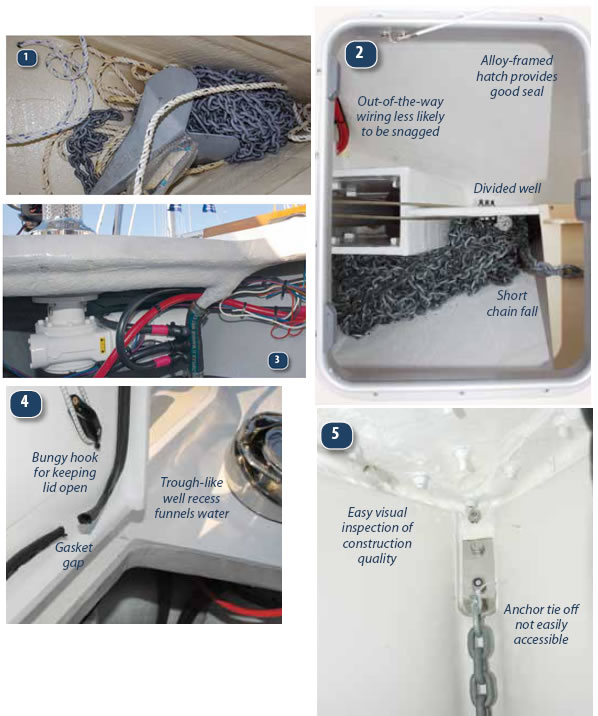
Photos by Ralph Naranjo
1. When a boat is floating at rest, an anchor locker drain should be able to shed all water in the locker. Residual water evaporates, but it leaves the salt behind. The brine combines with the sulfur-laden bottom residue, creating a galvanic reaction and a puddle of rust. Even on this new boat, anchored only a few times, water trapped in the anchor well has already becoming a chemistry experiment.
2. An anchor locker lid that is an alloy framed deck hatch has a better chance of creating a watertight seal than the typical gasketed lids. In this case, however, the chain fall is mere inches before the chain has to bend at a right angle as it drops into the locker. Both chain stripping and castling will likely be an issue.
3. Loose- fitting hatches and mediocre gaskets invite moisture below. Some 4. vessels (like the Tartan in picture 4) have a gutter around the perimeter of the hatch to lead water to a drain. This setup won’t keep leaks at bay during a heavy-weather beat to windward. Add wiring—like the setup on the Jenneau/Beneteau in picture 3—to the flood zone, and it’s a good idea to make sure that the windlass breaker is located elsewhere and is turned off.
5. This cable-tied chain rode is a perfect example of how an all-chain rode should never be secured. In an emergency, the anchor rode could not be quickly or easily slipped. Attaching the chain to a shackle and 20 feet of rope secured by bowlines allows for a much quicker escape as crew can slip the knots or cutaway the line from the deck, rather than having to scramble around in a locker.




































